TLDR Scientists can now create skin with hair by reprogramming cells in wounds.
The document reports a significant advancement in regenerative medicine, specifically in the regeneration of skin appendages like hair follicles and sweat glands, which are typically absent in scar tissue post-wound healing. The study demonstrates that by transplanting a combination of reprogrammed epithelial and mesenchymal cells, derived from adult mouse subcutaneous mesenchymal cells, into a wound, it is possible to generate skin with de novo (newly formed) appendages. Additionally, the development of a new adeno-associated virus (AAV) serotype enabled the in vivo reprogramming of wound-resident cells, leading to the creation of skin with hair in adult mice. This breakthrough offers promising therapeutic potential for treating skin appendage disorders, such as hair loss and dry skin, and could be applicable to the regeneration of other complex organs.
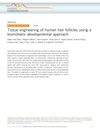 184 citations
,
December 2018 in “Nature Communications”
184 citations
,
December 2018 in “Nature Communications” Researchers created human hair follicles using a new method that could help treat hair loss.
169 citations
,
January 2018 in “Cell Reports” Scientists grew hair follicles from mouse stem cells in a lab setting.
173 citations
,
August 2015 in “Developmental cell” The study identified unique genes in hair follicle cells and their environment, suggesting these genes help organize cells for hair growth.
1235 citations
,
December 2013 in “Nature” Two fibroblast types shape skin structure and repair differently.
854 citations
,
February 2002 in “The journal of investigative dermatology/Journal of investigative dermatology” Understanding hair follicle development can help treat hair loss, skin regeneration, and certain skin cancers.
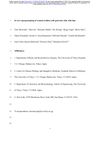 March 2023 in “bioRxiv (Cold Spring Harbor Laboratory)”
March 2023 in “bioRxiv (Cold Spring Harbor Laboratory)” Scientists can now create skin with hair by reprogramming cells in wounds.
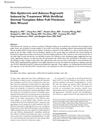 1 citations
,
January 2019 in “The International Journal of Lower Extremity Wounds”
1 citations
,
January 2019 in “The International Journal of Lower Extremity Wounds” Artificial dermal template treatment can stimulate complete skin and hair follicle regrowth.

Dermal stem cells help regenerate hair follicles and heal skin wounds.
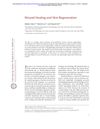 359 citations
,
January 2015 in “Cold Spring Harbor Perspectives in Medicine”
359 citations
,
January 2015 in “Cold Spring Harbor Perspectives in Medicine” Hair growth phase and certain genes can speed up wound healing, while an inflammatory mediator can slow down new hair growth after a wound. Understanding these factors can improve tissue regeneration during wound healing.
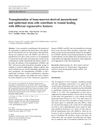 36 citations
,
April 2013 in “Cell and Tissue Research”
36 citations
,
April 2013 in “Cell and Tissue Research” Bone-marrow and epidermal stem cells help heal wounds differently, with bone-marrow cells aiding in blood vessel formation and epidermal cells in hair growth.
January 2005 in “Journal of Nanhua University” Bone marrow mesenchymal stem cells help rabbit skin wounds heal faster.






